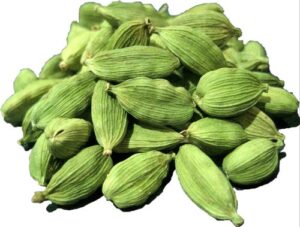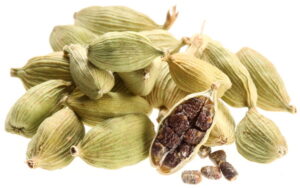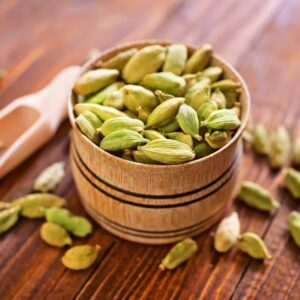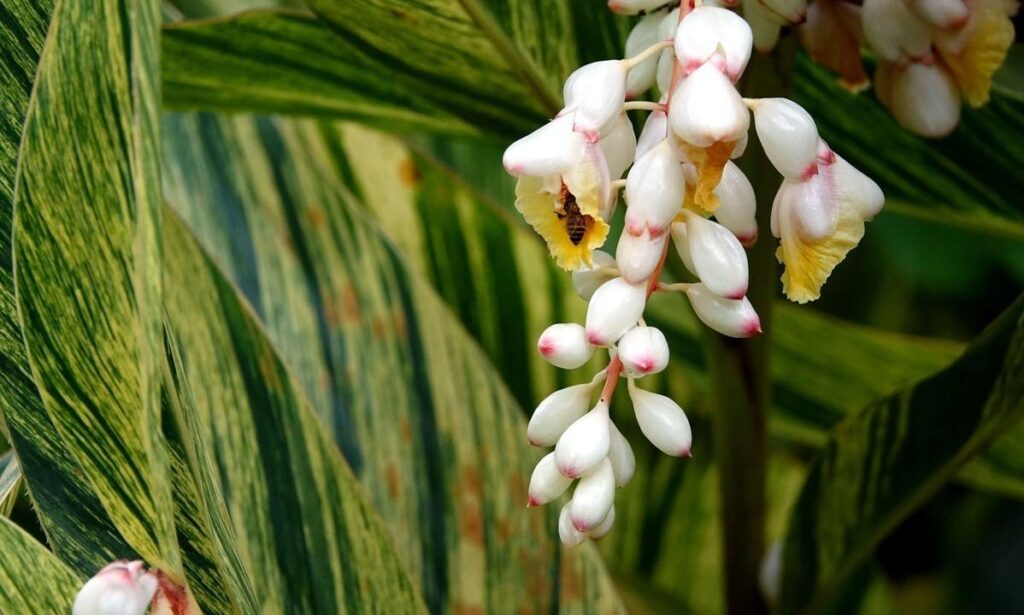Ayurvedic
Sukshamela (Elettaria cardamomum) Herb Ayurvedic Overview
Sukshamela (Elettaria cardamomum) is known as the ‘Queen of Spices’. It is a robust perennial plant growing in a thick clump up to 5 meters tall. It is one of the oldest spices and was used extensively in ancient Egypt, and from there, its cultivation spread from many parts of the tropics. It grows from underground rhizomes, the leaves are long and narrow, colored dark green. The plant is commonly known by the names Cardamom, Ceylon Cardamom, and Malabar Cardamom.
Raw seeds of elaichi are chewed to detoxify caffeine and bad breath of mouth. It is used as an appetizer, is good for the digestive system, relieves colic, and gives warmth to the stomach. The elaichi is rich in antifungal, antiviral, antibacterial properties and provides many health benefits to an individual.
Table of Contents
Scientific Classification of Sukshamela (Elettaria cardamomum):
- Kingdom: Plantae – plantes, planta
- Subkingdom: Viridiplantae – green plants
- Infrakingdom: Streptophyta
- Superdivision: Embryophyta
- Division: Tracheophyta – vascular plants, tracheophytes
- Subdivison: Spermatophytina – spermatophytes, seed plants
- Class: Magnoliopsia
- Superorder: Lilianae – monocots, monocotyledons, monocotyledones
- Order: Zingiberales
- Family: Zingiberaceae – ginger family
- Genus: Elettaria
- Species: Elettaria cardamomum
Sukshamela (Elettaria cardamomum) Synonyms:
- Sanskrit: Truti, Ela
- Assamese: Sarooplaachi
- Bengali: Chota elaich
- English: Cardamom
- Gujrati: Elchi, Elachi, Elayachi
- Hindi: Choti Ilayachi
- Kannada: Elakki, Sanna Yalakki
- Kashmiri: Kath
- Malayalam: Elam, Chittelam
- Marathi: Velloda, Lahanveldoda, Velchi
- Oriya: Gujurati, Chotaa leicha, Alaicha
- Punjabi: Illachi, Chhoti Lachi
- Tamil: Siruelam
- Telugu: Chinne Elakulu, Sanna Elakulu
- Urdu: Heel Khurd
Sukshamela (Elettaria cardamomum) Description:
Macroscopic:
 Fruit: The fruit is 1-2 cm long ovoid or oblong and more or less three-sided with rounded. The surface is almost smooth or with slight longitudinal striations. The small trilocular fruit contains about 15-20 seeds in a row of doubles, adhering together to form a compact mass. The base is rounded or with the remains of the pedicle, and the apex is shortly beaked.
Fruit: The fruit is 1-2 cm long ovoid or oblong and more or less three-sided with rounded. The surface is almost smooth or with slight longitudinal striations. The small trilocular fruit contains about 15-20 seeds in a row of doubles, adhering together to form a compact mass. The base is rounded or with the remains of the pedicle, and the apex is shortly beaked.
 Seed: The seed of elaichi is dark brown to black, about 4 mm long and 3 mm broad. It is irregularly angular, transversely wrinkled but not pitted. With a longitudinal channel, it contains raphe, enclosed in a colorless, membranous aril, odor, strongly aromatic, taste, characteristic.
Seed: The seed of elaichi is dark brown to black, about 4 mm long and 3 mm broad. It is irregularly angular, transversely wrinkled but not pitted. With a longitudinal channel, it contains raphe, enclosed in a colorless, membranous aril, odor, strongly aromatic, taste, characteristic.
 Microscopic: The transverse section of seed shows flattened, aril, thin-walled parenchymatous cells. The testa with outer epidermis is thick-walled, narrow, having elongated cells, followed by a layer of collapsed parenchyma becoming 2 or 3 layered in the region of the raphe, composed of large, thin-walled rectangular cells containing volatile oil. Outer palisade sclerenchyma with yellow to reddish-brown beaker-shaped cells is 20 µ in the radial direction and 12 µ wide.
Microscopic: The transverse section of seed shows flattened, aril, thin-walled parenchymatous cells. The testa with outer epidermis is thick-walled, narrow, having elongated cells, followed by a layer of collapsed parenchyma becoming 2 or 3 layered in the region of the raphe, composed of large, thin-walled rectangular cells containing volatile oil. Outer palisade sclerenchyma with yellow to reddish-brown beaker-shaped cells is 20 µ in the radial direction and 12 µ wide.
It is thicker on the inner and anticlinal walls. Each cell with a small bowl-shaped lumen containing a warty nodule of silica and an inner epidermis of flattened cells, perisperm cells thin-walled packed with minute rounded polyhedral starch grains of about 1-2 to 4-6 µ in diameter. The endosperm of thin-walled parenchyma containing protein as a granular hyaline mass in each cell. The embryo of small thin-walled cells containing aleurone grains, and the starch is absent in endosperm land embryo.
Identity, Purity, and Strength of Sukshamela (Elettaria cardamomum):
- Foreign matter Not more than Nil percent, Appendix 2.2.2.
- Total Ash Not more than 6 percent, Appendix 2.2.3.
- Acid-insoluble ash Not more than 4 percent, Appendix 2.2.4.
- Alcohol-soluble extractive Not less than 2 percent, Appendix 2.2.6.
- Water-soluble extractive Not less than 10 percent, Appendix 2.2.7.
- Volatile oil Not less than 4 percent, Appendix 2.2.10
Chemical Constituents of Sukshamela (Elettaria cardamomum):
The major compounds in the essential oil of elaichi were 1, 8-cineole (45.6 %), α-terpinyl acetate (33.7 %), sabinene (3.8 %), 4-terpinen-4-ol (2.4 %), and myrcene (2.2 %), respectively.
Ayurvedic Properties and Action of Sukshamela (Elettaria cardamomum):
- Rasa: Madhura, Katu
- Guna: Laghu
- Virya: Sheeta
- Vipaka: Madhura
- Karma: Anulomana, Deepana, Hrudya, Mutrala, Rochana
Ayurvedic Formulation made by Sukshamela (Elettaria cardamomum):
The important formulations are Eladi Vati, Eladi ghritam, Eladi thailam, Elakanadi Kshayam, Sitopladi Churna, Eladi Churna, Eladi Modaka.
Therapeutic Uses of Elettaria cardamomum:
Shwashara, Mutrakrichrahara, Kasahara, Kshayahara, Hrudya, Aruchi, Chardi.
Dose of Elettaria cardamomum:
250-500 mg of the drug in powder form.
Reference:
Ayurvedic Pharmacopeia of India.
For regular health updates, Please follow our Social Pages


